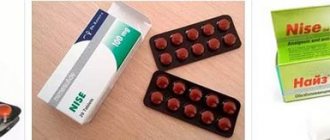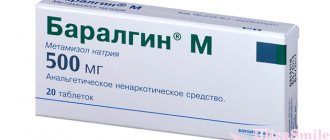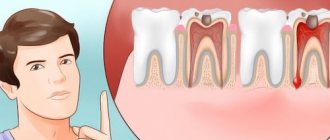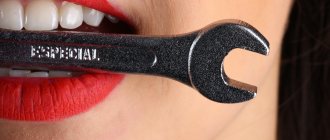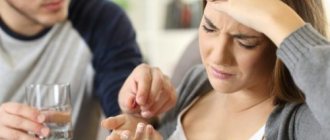We have all experienced pain in one way or another. It happens that it is fleeting and does not bring much discomfort, but it happens the other way around. Paroxysmal, recurring or constant. For such indications, pain medication is necessary.
Nimesil is used for toothache
Nimesil is a non-steroidal drug that has analgesic, anti-inflammatory and antipyretic effects. Nimesil is used as a symptomatic treatment of pain in dental, headache, menstrual, joint, muscle and postoperative pain, as well as in the treatment of injuries to soft tissues and the musculoskeletal system. The duration of the drug's effect is about 6 hours.
Nimesil can be used either once or for systemic therapy, that is, for a long (up to 15 days) course.
What does Nimesulide help with and indications for use?
Before using the drug, consult a doctor.
It is important to remember that Nimesulide does not affect the causes of diseases and does not treat them. This drug is symptomatic and is used to relieve and alleviate clinical manifestations.
The main indications for taking the drug are:
- Diseases of the musculoskeletal system with severe pain (arthritis of various origins, including rheumatoid, bursitis, tendonitis, osteoarthritis, myalgia).
- Early postoperative period.
- Headache or toothache.
- Periodic pain in women.
University
Walking with strength I have been sick for six months. At first I experienced pain in my hip. She underwent a course of treatment at the clinic. There is no improvement, the disease is progressing. I can no longer get on the trolleybus - the pain prevents me. I went to the surgeon. Tell me, is rheumatoid arthritis curable? Maria Ivanovna from Minsk - You do not have rheumatoid arthritis. After all, only one leg hurts. Now we need to figure out: what causes the pain - problems in the hip joint or in the lower back? The leg may hurt from a pinched nerve from a herniated lumbar disc. If the cause becomes clear, the prescription of treatment will depend on this. You need to consult a rheumatologist, and possibly a neurologist. I have grade II arthrosis of the hip joints. Severe pain. I live alone and move around with great difficulty. Now the pain began to move to the knees. I took 25 injections of mucosate, but it didn’t help me. I don’t take painkillers, I only take them for my heart and blood pressure. Nina Pavlovna from Minsk - I would advise you to buy inexpensive nimesulide tablets, which relieve pain quite well. Take them 1 tablet in the morning and evening after meals. If the pain is very strong, then you must have a more pronounced degree of arthrosis than the one you said. Ask to be referred to the city diagnostic center for a consultation with a rheumatologist. Here I consult patients twice a month. If you go to your appointment, bring your hip scans with you. Without seeing them, it is difficult to give recommendations in absentia. A call from your spine. Tell me how to deal with the problem of salt deposits not only in the joints, but also in the cervical spine and vertebral artery? Tatyana from Minsk, 40 years old - Since you are 40 years old, ideally with such troubles you need to visit a sanatorium once a year, at least in “Radon”, where you need to undergo a course of massage, mud applications, radon baths. You need to constantly think about the fact that you are 40 now, but will be another 60, 70 years old, etc. And every year problems with the cervicothoracic spine can get worse. 1-2 times a year you also need massage courses for the spine - cervical and thoracic regions. You need to do special exercises for the spine to make it move. It is difficult to recommend in absentia, but it is also worth taking medications for the cartilage of the intervertebral discs - structum, DONU, etc. In addition, special vasodilators for the vertebral artery. Are you worried about your blood pressure? - It’s high for me. “Then to reduce it, take amlodipine, a drug that dilates blood vessels in the brain. — Are there specialized centers in Minsk where you can undergo examination and receive adequate treatment prescriptions, rather than from a local doctor or neurologist? — You most likely should contact the Republican Center for Neurology and Neurosurgery. It is better if you have a referral from a neurologist. However, you can get there without it. I fell ill 20 years ago, and all the time I was diagnosed with “common osteochondrosis.” But when I was hospitalized at the 5th clinic in Minsk, along with many diagnoses, I was also diagnosed with Schmorl’s hernia. Lyudmila Ivanovna from Minsk, 67 years old - This is all something you can live with. — I don’t go to the clinic, I self-medicate. When I went to the sanatorium, I decided to take a massage course, but after the first session I felt very bad: I couldn’t even move my legs. The pain was relieved with medication. Since then, if I don’t take Baralgin in the morning, I can’t live, I’m in pain. And now my legs are cramping and my knees hurt. Maybe this is due to my high weight? — If cramps begin to appear, this indicates problems in the lower back. And weight matters for the spine. You can significantly reduce excess body weight in your condition only by reducing the amount of food you eat. It won’t work out any other way, you can’t go to the gym, run, jump, etc. As for massage, you can and should do it. But it should not be strong, but moderate and gentle. In your case, you also need to take painkillers, but not baralgin. If you take this drug for a long time, you can develop blood complications. It is better to buy diclofenac, dicloberl, ibuprofen and others, but this is only if you do not suffer from high blood pressure. And, of course, rub problem areas with warming ointments. You can also apply heat to your back: use paraffin or mud for this purpose. Squeak more cheerfully, dear ones! My knees and elbows hurt, and I suffer from high blood pressure. I am diagnosed with “arthritis” and “arthrosis”. They gave me mucosat injections and massaged my thigh, because I was experiencing severe pain in this area. Lyudmila Vladimirovna from Minsk - Do you have pictures of the hip joints? If not, then make them. Often, knees hurt due to changes in the hip joints. — I took 120 Teraflex tablets. This medicine helped for a short time. Then I was prescribed diclofenac. - This is not very good, because diclofenac increases blood pressure, and you already have arterial hypertension. I think that you need to consult a rheumatologist. But if the pain bothers you, take Nimesil, Movalis or Celebrex - medications that are safer and do not greatly affect blood pressure. — Does shark cartilage help in this case? “You shouldn’t hope that he will save you from suffering.” Doctors diagnosed me with deforming arthrosis. Please advise what needs to be done to get back on your feet. Zinaida Filippovna from Minsk - If the changes in the knee joint are large and the pain is severe, you need to walk with a cane to ease the load. But women don't like to walk with a stick. It is also necessary to take painkillers. — I take ketans. - Is it dangerous. You can take 1-2 tablets and no more, this medicine has many side effects. If you drink it constantly and for a long time, it can cause stomach ulcers. It is better to use meloxicam, nimesulide or celecoxib. Don’t forget to rub anti-inflammatory ointments into your sore knee every day, the choice of which is wide in pharmacies. If you use alcohol tinctures for these purposes, be careful not to burn your skin. — The specialist I saw said that the pain in my knee was due to the fact that my thyroid gland was unhealthy, and prescribed calcemin. - This is indeed possible, but not in this case. If you had a diseased thyroid gland, then the pain would bother you in both knees. Calcemin will not help your joint, but it will not cause harm to the body, since older women need to receive additional calcium. A few months ago I was diagnosed with grade II arthrosis of the knee joints. The surgeon at the clinic said that I should limit my movement, going up and down the stairs. This makes me very sad because I really like to move. Vera Vasilievna from Minsk - Indeed, with such a diagnosis it is impossible to overload the joints. But I think it’s wrong to forbid you to go. If you like to walk, do it, but don't carry heavy bags. Don't jump. Walk up and down the stairs slowly. Movement should be limited only during periods of exacerbation and pain. — Now I’m taking Teraflex. When should you take a break? — I would advise you to periodically change your medications. Ideally, if you have arthrosis, you need to take them constantly. But if you are experiencing financial difficulties, then take medications in courses. You take it, for example, for three months, then a month or two off. Tell me, is deforming arthrosis of the right knee joint curable? Ivan Stepanovich from Glubokoe - Unfortunately, no. You need to learn to live with this disease. — Can you drink Teraflex? - This is a little tested drug. But there are many other medications (chondroitin sulfate, glycosamine sulfate, structum, DONA) that should be alternated rather than given preference to one. Physiotherapy, compresses, and warming are also needed. Treatment should be aimed at preventing the disease from progressing. — Are arthrosis and chondromatosis the same thing? - No. Sometimes excess ossified tissue, which was previously cartilaginous, “grows” in the joint. At times, it can become pinched, getting between the articular surfaces, and cause severe pain. - So, surgery can save me from pain? - Yes. If you sometimes have extreme pain, it may be caused by a chondroma. This is a laparoscopic operation. The joint is washed and “floating ossified formations” are removed from it, which relieves the person of pain. I have been suffering from chronic deforming arthrosis for more than 15 years. I use a lot of folk remedies and probably take a kilogram of recommended pills. My joints still hurt, and I can hardly move anymore. I was put on a waiting list for knee replacement. Will this help me and is it necessary to have such a difficult operation at my age? Grigory Egorovich from Minsk, 80 years old—At this age, this is a really difficult question. Much depends on the condition of your heart, lungs, kidneys, etc. And in general, can your body withstand such a traumatic operation? But, if it goes well, it relieves the person of pain. If you were 70 years old, I would definitely recommend agreeing, in addition, not taking kilograms of drugs. In fact, at this age, all that is needed is medication that reduces pain. These are nimesulide, meloxicam, celecoxib. You can alternate them and choose the product that suits you best. My knees and calves hurt a lot, so I try to move as little as possible. My diagnosis says: osteochondrosis and lumbodynia. I took Nimesil and diclofenac injections, and applied ointments. All this only partially relieves the pain. Nina Vasilievna from the Sennensky district - The causes of your suffering should be sought in the lower back. Therefore, all efforts: massage, rubbing, heat treatment - must be directed to this area. Take nimesil powders according to this regimen: one 2 times a day after meals until the pain goes away. Nimesil is just one of those medicines that has little effect on the stomach. Diclofenac has a more negative effect on the gastrointestinal tract. I advise you to move as much as possible. My mother is experiencing destruction of cartilage in her knee joints. Last year she did 23 blockades, took 150 Teraflex tablets - absolutely nothing helped! Mom has a sick stomach. Valentina from Borisov - I would advise her to take painkillers: Nimesil 2 powders per day or Movalis 15 mg 1 tablet per day. You can use Dollit-cream, Voltaren-gel, Fastum-gel, etc. Whatever helps best is what needs to be treated. And, of course, she needs warmth. I have had arthritis of the knee joints since I was 35 years old. I used to go to sanatoriums all the time. When I was younger, everything helped me, but now doctors say that my disease cannot be cured. The doctor advised me to go down the stairs sideways and down the mountain with my back. Alexander Viktorovich from Minsk, 76 years old. — You need to take pictures of your knee joints and ask to be referred to the diagnostic center for a consultation with a rheumatologist. X-rays of the joints are necessary to determine treatment tactics. Indeed, in the early stages of the disease, some treatment regimens are used, in later stages - others. How to raise your hand? * I have been struggling with my shoulder for a long time. If I turn wrongly at night, my heart hurts. I can’t raise my arm to shoulder level because my mobility is limited. Sometimes I use capsicam ointment. Igor from Pinsk, 46 years old - The first thing you need to do is take a course of painkillers and anti-inflammatory drugs - diclofenac or dicloberl 50 mg, 3 tablets per day. The course of treatment is 7-10 days. The second is a massage of the cervical-collar area (10 sessions). Third, if you have been suffering from pain for a long time, you can use thermal procedures: paraffin or ozokerite on the neck and shoulder. — Is it worth using birch tar? - It’s possible, but it’s an auxiliary tool. * I worked at a construction site, perhaps all my problems came from this work. At first the muscles hurt, then the elbow, now the pain was concentrated in the shoulder joint. People advise me to inject a drug into the joint. Nikolai Valentinovich from the Novogrudok district - An injection is a last resort. First, you should treat the pain with deep heating. You can heat peat, grain, salt in a bag and apply it to your neck and shoulder for two hours. “My wife applied clay, but that only made me feel worse.” I also have high blood pressure. — You can warm it with clay, but you should definitely warm the neck area as well. In addition, take nimesil in the morning and evening after meals for 10 days, and monitor your blood pressure levels. If necessary, increase the dose of antihypertensive drugs. * Two months ago I was diagnosed with deforming osteoarthritis of the shoulder joint. Maria Varfolomeevna from Vitebsk, 65 years old - I’ll say right away that deforming arthrosis of the shoulder joint practically does not happen. “Nevertheless, my movements are limited and there is debilitating pain in one shoulder. It is constant both day and night. Now my other shoulder is starting to hurt as well. The rheumatologist prescribed me a course of ultrasound treatment. “At this age it is dangerous because blood pressure may increase. You need a massage of the cervical-collar area plus heat. From electrical procedures - SMT - sinusoidally modulated currents to the neck and shoulder area.
Knots for memory * Bones have started to grow on the joints of my big toes and toes. How to live with them now? Valentina Pavlovna from Minsk - These bones are called Giberden's nodes. There is no need to be afraid of their appearance. This is a manifestation of osteoarthritis - a disease that is popularly mistakenly called salt deposition in the joints. Sometimes the fingers where the nodules are located may ache, but in principle these nodules cause more trouble for a woman due to a cosmetic defect than due to physical pain. Unfortunately, medicine does not know any means and methods that could save patients from such troubles. It is believed that their appearance is somehow related to genetics. Most likely, your grandmother or great-grandmother also had them, so you, unfortunately, inherited them too. - They really were! And another question. I constantly feel goosebumps running down my toes. — Do you suffer from diabetes? - No. — Doesn’t your lower back hurt? - Worrying. - Usually the sensation of pins and needles in the lower extremities is due to problems in the lower back. Since you feel some numbness in your toes, there is a problem somewhere between the 4th, 5th lumbar and 1st sacral vertebrae. I would advise you to visit a neurologist. * My joints crack and click, but do not hurt. As soon as you shake your hand, a characteristic sound is heard. Sometimes the temperature stays at 37.2 degrees, then suddenly disappears. I wasn’t sick with anything, but nevertheless I had my blood tested. The doctor said that everything was normal and diagnosed polyosteoarthrosis. I was prescribed chondrosamine and calcium. Sergey from the city of Gorki. I am 22 years old - I don’t think this will help you, since polyosteoarthrosis cannot exist at 22 years old, this is some kind of casuistry! Most likely, unpleasant manifestations in the joints and bones are associated with some source of infection in the body. Usually this condition occurs due to problems in the throat - chronic tonsillitis, urinary tract infection, diseased intestines. If the stomach does not hurt, there are no disorders, then the problem should be looked for in the urinary tract or throat. In addition to a general blood test, you also need to take a general urine test, and if nothing is found, perhaps you should come to Minsk, because in Gorki they don’t do tests to look for infections. You need to find the cause of your ailments. * I am an active person, I don’t like to sit still, but as soon as I walk, my big toes start to hurt. Perhaps this is due to the flat feet that I suffer from? I also have osteochondrosis and scoliosis of the spine. What can be done? I went to the clinic, but it was of little use. Margarita Efimovna from Minsk, 60 years old - You are worried about arthrosis of the big toes, which also helped develop flat feet. You need to take a picture of the diseased joints and consult a rheumatologist. * I suffer from pain in my legs. At the hospital they injected me with mucosate into my ankle joints. It didn't help much. I mainly use alcohol tinctures and rub the painful areas. I drink teraflex. Vera Evtikhievna from Starye Dorog, 62 years old - This drug will not relieve pain. To get rid of it, you need to take painkillers for your weight, for example, diclofenac (dicloberl) 100-150 mg per day or 2 tablets of nimesulide (nimesil, nise), meloxicam (movalis) 15 mg per day, take painkillers and warming compresses, walking with a stick so that the load on the ankle joints suffering from arthrosis is not too noticeable due to your heavy weight. Use ointments or folk remedies: apply cabbage leaves at night, rub with tincture of birch buds and horse chestnut. Vulnerable knees My husband suffered a stroke and his entire left side was completely paralyzed. Now he walks, but his knee and shoulder joints hurt a lot. The pictures showed that my husband had arthrosis of the second degree. The dikloberl and ketanov prescribed by the doctor do not help. Shcherbitskaya P.P., Glubokoe
— Pain in the shoulder and knee joint on the affected side, where there are consequences of a stroke, is associated with impaired cerebral circulation — these are so-called post-stroke pains. They can go away on their own over time, but they differ in that anti-inflammatory pain medications have little effect on them, because the cause of the pain is related to the nervous system. Therefore, to the painkillers that can be taken (just don’t get carried away with ketane because of the many side effects!), you need to add drugs that affect the central nervous system, such as phenazepam, finlepsin. These drugs can be prescribed by neurologists or general practitioners. Your husband can also benefit from massage and warm compresses; everything needs to be done in combination.
I am experiencing pain under my knee joints. The surgeon wrote a diagnosis of “bilateral gonarthrosis of I-II degree.” I use different tablets and ointments, but they help little. My legs hurt a lot. What to do? Anna Pavlovna, Molodechno district, Krasnoe village
— At your age, of course, changes in the knee joints may occur such as bilateral gonarthrosis, in which case the pain may be localized in the popliteal region. It is possible that, in addition to moderate changes in the knee joints, you also have problems in the lumbar spine such as osteochondrosis or spondylosis, which may result in pain in the knee joints. This often happens when an intervertebral hernia occurs at the level of the 3rd lumbar vertebra with pinched roots. Then pain bothers the patient in the area of the popliteal fossa. In addition to the treatment you are using, you need to visit a neurologist, or do warm-up or massage on the lumbosacral spine yourself.
I have bilateral arthrosis of the knee joints. In 1990, the fluid was pumped out and an infection occurred. Then they treated me a little, and today the doctors insist on surgery. Is it possible to heal the knee and avoid surgery? Ida Petrovna, Minsk
- Apparently, your gonorrhea is secondary in nature - as a complication of infectious arthritis. It is not possible to cure such a disease. However, whether you need surgery or not can only be determined after a consultation. If the cartilage in the knee joint is practically destroyed, the joint space is narrowed, which causes significant dysfunction and pain at the slightest movement, then it is better to undergo surgery.
The knee joints are very bothersome, the sacrum hurts. I can't stand without support. Since I have long been diagnosed with a high level of uric acid in the blood, I take 1 tablet of allopurinol to reduce it. Maybe there are new drugs? Nina Nikolaevna, Kletsky district
- If you are taking this medicine to lower uric acid levels, then a better drug has not yet been created for this purpose. The question is: do you need it? High levels of uric acid in the blood do not mean that a person is sick. Experts know that many people have elevated blood levels. At the same time, not everyone has gout that requires treatment. Since you are complaining of pain in the sacrum and joints, it can be assumed that they are arthritic and not associated with increased levels of uric acid in the blood. The fact is that with gout the pain is paroxysmal in nature, it is never constant. The attack can last 1-3 weeks and then disappears. Therefore, it is possible that, in addition to allopurinol, you need to take the anti-inflammatory drugs mentioned above.
I was tormented due to bilateral coxarthrosis. What to do? Nikolai Antonovich, Minsk, Fedor Ivanovich, Stolinsky district, Ozdanich village - Unfortunately, the stage of arthrosis is unknown, so an x-ray is needed. At stages I-II, medication, physiotherapy, and sanatorium treatment are usually used. Among the medications, in addition to painkillers, they take chondroprotectors: DONU, structum, etc. And at stages III-IV, endoprosthetics is recommended, when a worn-out joint is replaced with an artificial prosthesis. But this is only if age allows, there are no contraindications for surgery or serious diseases of the internal organs. Remember: now you can’t overload your hip joints by walking for a long time, carrying or lifting weights. You can swim, ride a bike. It is important to strengthen the muscles. Sitting hurts... I was not yet 40 years old when pain in the hip joints began to bother me. I didn't attach any importance to this. But over time, it became painful for me to even sit. The pain radiates down the entire right leg. I developed swelling in my heel area. To add insult to injury, I also have a torn ligament in my left knee. I still haven’t applied anywhere, and I don’t know which specialist I should go to? Svetlana Alexandrovna, Petrikovsky district
— Since you fell ill at a fairly young age, it is possible that you have the disease sacroiliitis, which can be unilateral or bilateral. This is an inflammation of the sacroiliac joints. The zone where, roughly speaking, the spine is “attached” to the pelvic bones. With inflammation in this area, which is a complication of a urinary tract infection, pain can radiate throughout the leg, right down to the heel and calf muscles. A complication called lumbar ischialgia develops. In order to understand your situation, you need to consult a neurologist or rheumatologist. First, I would advise you to take x-rays of the hip joints and sacroiliac joints. This will help the doctor prescribe adequate treatment for you. As for the rupture of the ligaments in the left knee joint, in such a situation, immediately when this happens, the patient is operated on. If this happened a long time ago, there can hardly be any talk of surgery. And in order to keep the joint in a more fixed position, you need to either bandage it before going somewhere, or buy a special knee brace that you always use when you need to get ready for a trip. To reduce the pain that bothers you, you need to take non-steroidal anti-inflammatory drugs - diclofenac, ibuprofen, nimesulide, movalis, etc. I am a pensioner. Broke my femoral neck. Now I can get around somehow. I know that the level of calcium in the blood cannot be determined by passing a general blood test. The doctor insists that I take calcium constantly. Should I do this? Are effervescent calcium and lozenges equivalent in their effects on the body? Irina Vladimirovna, Minsk
— If your injury is not related to an accident, then a hip fracture is a manifestation of systemic osteoporosis, a disease that is quite common in older women.
If you have osteoporosis, then your body needs calcium supplements. They treat the disease itself poorly, but are a source of calcium for the body, which is necessary for the construction of bone tissue. In addition to calcium supplements, there are other medications such as olendronate and miacalcic, but they are, unfortunately, expensive. In any case, you need calcium supplements, so taking them regularly is recommended for you. It is only important that you choose modern drugs, and not calcium gluconate or calcium chloride, which were known before and in which there is very little calcium. There is no difference in effervescent or tablet lozenges. The main thing is that they contain a large dose of calcium. For your condition, you need to use 1000-1500 mg of calcium per day. The best of this group are Calcium-D3 preparations. I know that quite often patients are afraid to take these drugs because they supposedly affect the formation of kidney stones. I’ll say right away: this is not so! Scientific studies have been conducted in which patients with urolithiasis who have oxalate (calcium) stones were given calcium supplements. Their condition did not worsen. Soviet Belarus , February 27, 28, 1, 2. March 5, 2007
Contraindications
The drug is prohibited for gastric and duodenal ulcers, especially in the acute stage, for bleeding disorders and increased bleeding, Crohn's disease, bronchial asthma, inflammatory processes in the intestines, polyposis of the nasal cavity and paranasal sinuses.
Also, the use of Nimesulide is limited in case of individual intolerance to NSAIDs, severe chronic, renal and liver failure, in children under 12 years of age, during pregnancy and lactation.
Use for toothache
Powder is poured into warm liquid
The medicine is intended for oral administration.
Any anti-inflammatory drugs are recommended to be taken after meals, which is necessary to accelerate absorption in the intestines.
The tablets are taken by swallowing the drug.
It is recommended to take the medicine with a sufficient amount of liquid. The method of using the powder is different.
Instructions for use:
- The contents of the sachet are poured into a glass;
- The powder is poured with warm liquid (about 1/3 cup);
- The mixture is thoroughly stirred;
- The resulting liquid is taken orally.
As a rule, one dose (100 mg of Nimesulide) is enough to eliminate the unpleasant symptom.
Important to remember! The drug in gel form is not used in the treatment of dental diseases or any other pathologies of internal organs or mucous membranes. The gel is prescribed exclusively for the treatment of joint pain for local application.
Dosages
For toothache, take 1 dose of the drug. If the pain syndrome resumes, re-administration is carried out no less than 6 hours later.
The maximum daily dose is 400 mg (4 tablets). Long-term treatment of toothache with Nimesulide is contraindicated due to possible side effects.
Side effects and overdose
Taking Nimesulide in some cases may be accompanied by the development of unwanted side reactions. These include:
- From the side of the central nervous system: dizziness, anxiety, headaches, nightmares.
- Urinary system: decreased amount of urine excreted, hematuria, exacerbation of chronic renal failure.
- From the gastrointestinal tract: dyspeptic syndrome (nausea, vomiting, stool disorders), abdominal pain, flatulence, bleeding, gastritis, ulcerative lesions, jaundice as a result of cholestasis, increased transaminases.
- Skin: increased sweating and allergic reactions of varying severity (itching, urticaria, swelling, Stevens-Johnson syndrome).
- From the cardiovascular system: hypotension, increased heart rate.
- Hematopoietic organs: anemia, pancytopenia, increased clotting time.
- Respiratory system: shortness of breath, spasm of smooth muscles in the bronchi, exacerbation of COPD or bronchial asthma.
- Organ of vision: blurred perception.
Symptoms of overdose are similar to those of adverse reactions. They develop due to non-compliance with doctor’s instructions and uncontrolled use of Nimesulide.
In case of overdose, it is necessary to discontinue the drug, lavage the stomach to clean water and take activated carbon at the rate of 1 tablet per 10 kg of body weight.
How it works?
How do these drugs work in our stomachs? Everything is very simple, the negative impact is realized due to the imbalance of defensive and aggressive forces. We have a number of defense mechanisms in our stomach that allow us to withstand the onslaught of aggressors. Among the latest:
- An acid whose pH balance is close to that of battery acid
- Bile and pancreatic juice, which can be thrown into the stomach.
- A number of medications.
- Alcohol and nicotine.
- Irritating food components (spices, spicy foods, etc.)
- Helicobacter pylori infection and so on.
The stomach is protected due to a thick layer of mucus and bicarbonates that neutralize acid, adequate blood supply, and the ability to regenerate very quickly. When we use NSAID drugs, the balance of forces changes towards aggressive mechanisms and damage occurs to the mucous and submucosal layer of the stomach and duodenum.
Interactions
Nimesulide increases the activity of antiplatelet agents and anticoagulants. Concomitant use of this drug with diuretics reduces their effectiveness, which can lead to edema, especially in patients with hypertension and renal failure.
Nimesulide also increases the toxicity of cyclosporine and methotrexate. And its simultaneous use with GCS and serotonin reuptake inhibitors significantly increases the risk of bleeding in the digestive tract.
Some numbers
Some statistics. In the UK, approximately 24 million NSAIDs are prescribed per year. 70% of people over 70 years of age take NSAIDs once a week, and 34% daily. In the United States, up to 6 billion worth of NSAIDs are sold annually. As a result, the risk of developing gastrointestinal bleeding (GIB) increases 3–5 times, perforation by 6 times, and the risk of death from complications by up to 8 times. Up to 40–50% of all cases of acute gastrointestinal tract infections are associated with NSAIDs.
This problem is also relevant in our country, for example, according to the Scientific Center for Cardiovascular Surgery named after. A.N. Bakulev, out of 240 patients taking aspirin daily, even in small doses, gastroscopy revealed lesions of the stomach and 12 p.c. in 30% (of which ulcers - in 23.6%, erosions - in 76.4%). A similar picture was observed among colleagues from the All-Russian Research Institute of Rheumatology of the Russian Academy of Medical Sciences - in 2126 patients taking NSAIDs without “covering” (protection) of the stomach, erosions and ulcers of the gastroduodenal zone were found in 33.8% of cases. These are very impressive and dramatic numbers of complications from taking NSAIDs, considering the number of people using these drugs in developed countries.
Nise or ibuprofen: which is better and what is the difference (differences in composition, reviews from doctors)
Nonsteroidal anti-inflammatory drugs (NSAIDs) are used by specialists in all areas of medicine to relieve pain and inflammation. Only a doctor can prescribe Nise or Ibuprofen, choosing the drug that will cause the least harm to the patient’s health. The choice of remedy will depend on the age of the patient and the nature of the disease.
Only a doctor can prescribe Nise or Ibuprofen, choosing the drug that will cause the least harm to the patient’s health.
Characteristics of Nise
The active ingredient of the drug is nimesulide. Auxiliary:
- microcrystalline cellulose;
- corn starch;
- calcium hydrogen phosphate;
- sodium starch glycolate;
- magnesium stearate;
- anhydrous colloidal silicon and purified talc.
The active ingredient of the drug is nimesulide.
Nise is produced in the form:
- tablets;
- gel;
- suspensions for children.
Myths that we encounter in daily practice
Myth 1. Using NSAID drugs in the form of suppositories is less aggressive for the stomach than taking pills
This is 100% a myth. The pathogenic, destructive effect of the drug is realized through the blood, delivering it through the vessels to the stomach.
Myth 2. Medicines from the group of antacids - Rennie, Maalox, Phosphalugel and H2-blockers (Ranitidine and Famotidine) can be used as “gastroprotectors”
In this case they are not effective.
Myth 3. You can't take proton pump inhibitors regularly
The fact is that if an elderly person has been prescribed an anti-inflammatory drug for life, it is absolutely pointless to prescribe gastroprotection for a month. In such cases, medications should be taken strictly in parallel.
Myth 4. Food products (jelly, etc.) can act as “gastroprotectors”
We will leave this myth as absolutely fantastic without comment.
